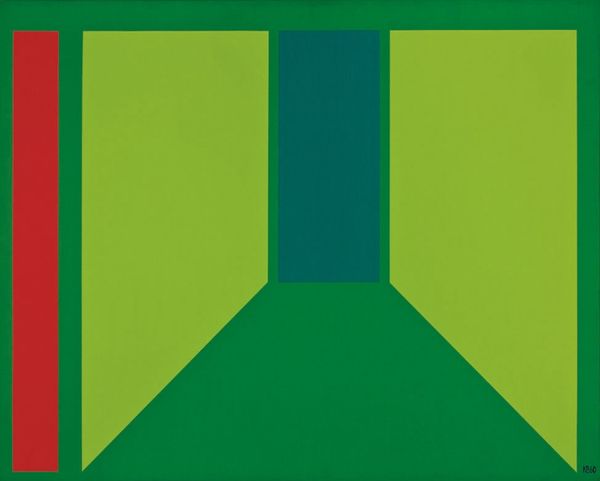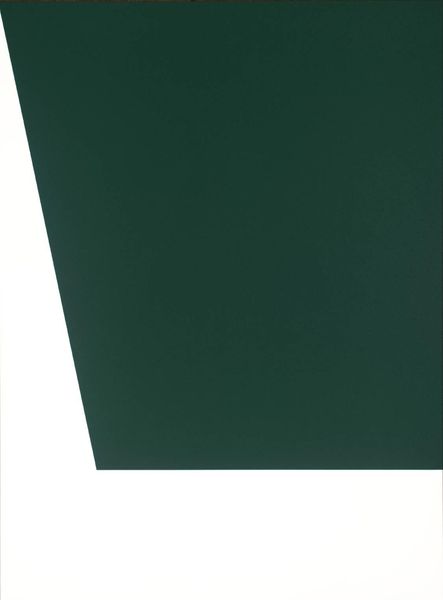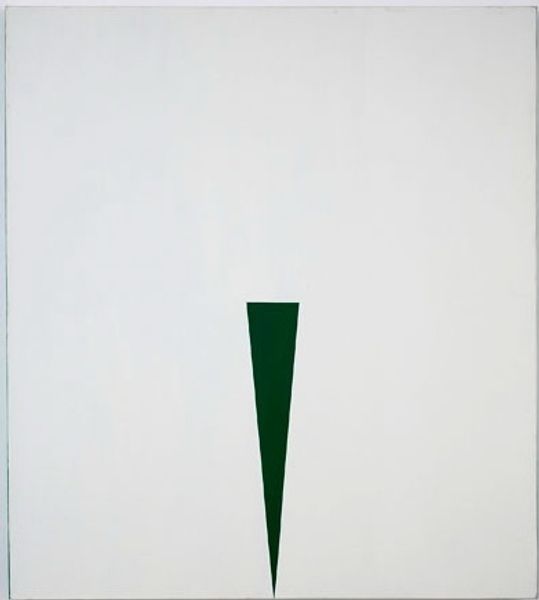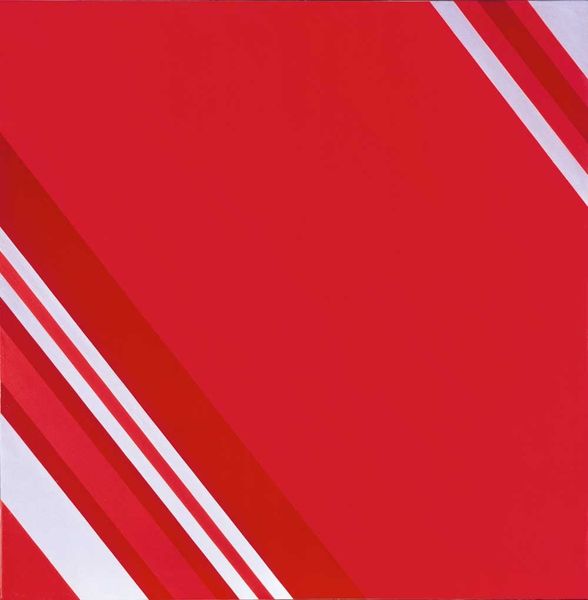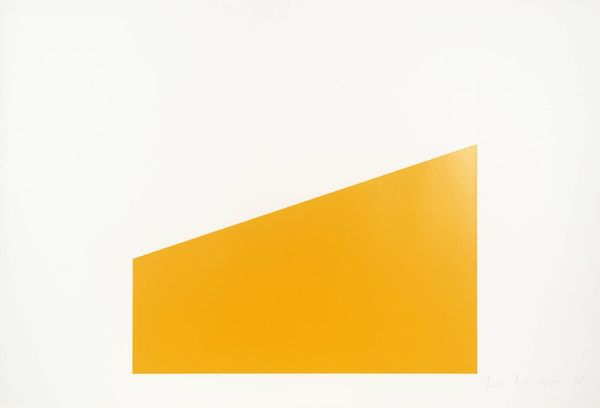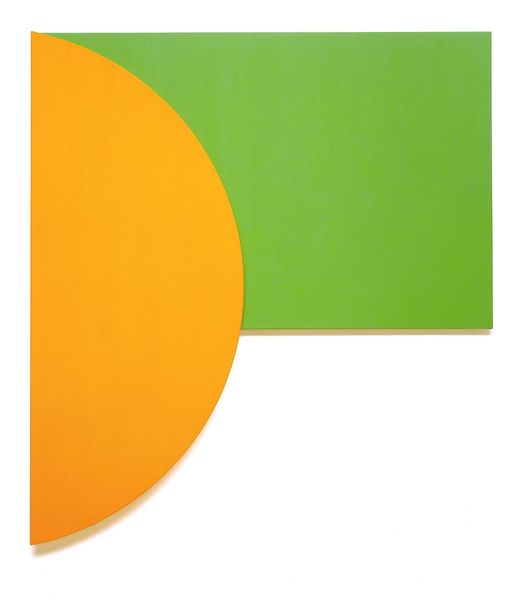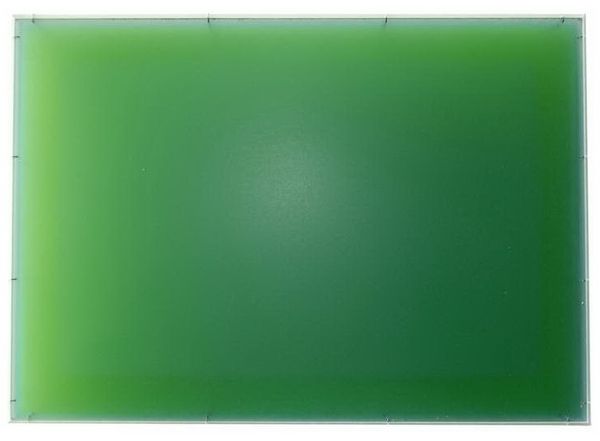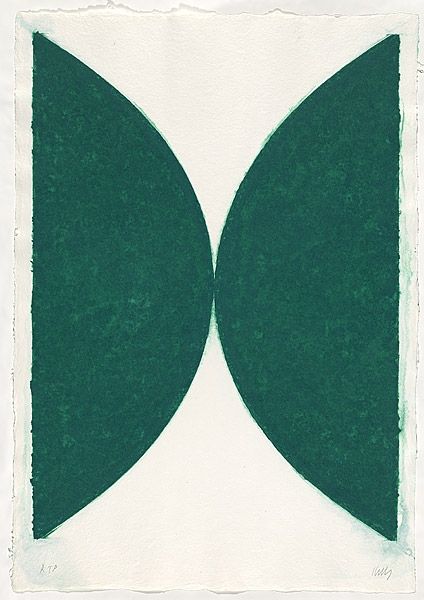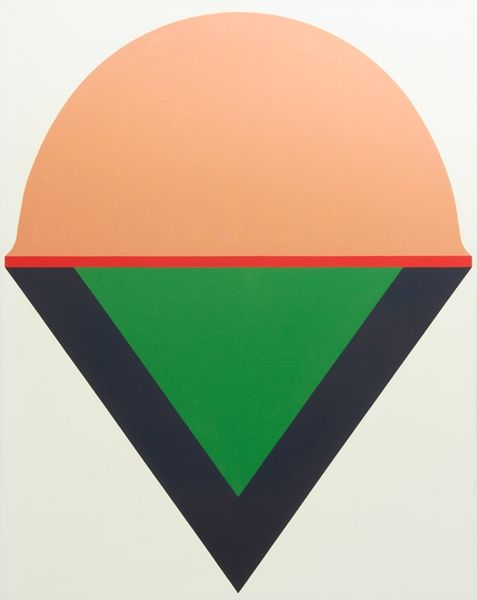
painting, acrylic-paint
#
painting
#
minimalism
#
acrylic-paint
#
form
#
geometric
#
abstraction
#
line
#
modernism
Copyright: (c) Ellsworth Kelly, all rights reserved
Curator: Ellsworth Kelly’s “Green Curve” from 2000, rendered in acrylic paint, is an intriguing composition. Editor: Yes, the juxtaposition of the crisp white against that saturated green immediately strikes me. It's incredibly clean and feels almost…serene despite the bold color choice. Curator: Indeed. Note how Kelly has reduced form to its essence. It’s more than just a geometric configuration, it’s a careful negotiation of positive and negative space, using a vibrant green that commands our gaze and engages our attention on a purely optical level. Editor: The surface itself invites consideration. What kind of canvas is it? Was it machine-made, or hand-prepared? How many layers of acrylic are needed to achieve that even density of pigment? I imagine this was a meticulous, deliberate process that demands careful attention and skilled labor to produce. Curator: While material origins certainly play a role in our understanding, I'm drawn more to how the spatial dynamic challenges the viewer's perception. The diagonal line created by the curve, cuts through the composition, inviting you to see the flat picture plane in terms of an expanded volume of form, generating a dialogue on surface and depth. Editor: But understanding that deliberate surface tension forces us to address the art making conditions that make the experience possible. High-quality acrylics like this are not cheap, so to engage in this style demands the support of institutions. In effect, what Kelly delivers is the distillation of privilege and resources. Curator: You're suggesting that its minimalist aesthetic obscures the material circumstances, or rather, masks it behind pure visuality? Editor: Exactly. But I see in "Green Curve," something hopeful, because, when confronting the essence of artistic production like we do with this painting, we may realize how we too participate in it. Curator: I concede your perspective enriches my initial read, framing our engagement within a wider, albeit veiled context. Editor: And with your formal perspective we may acknowledge the beautiful surface as both aesthetically and historically positioned.
Comments
No comments
Be the first to comment and join the conversation on the ultimate creative platform.

